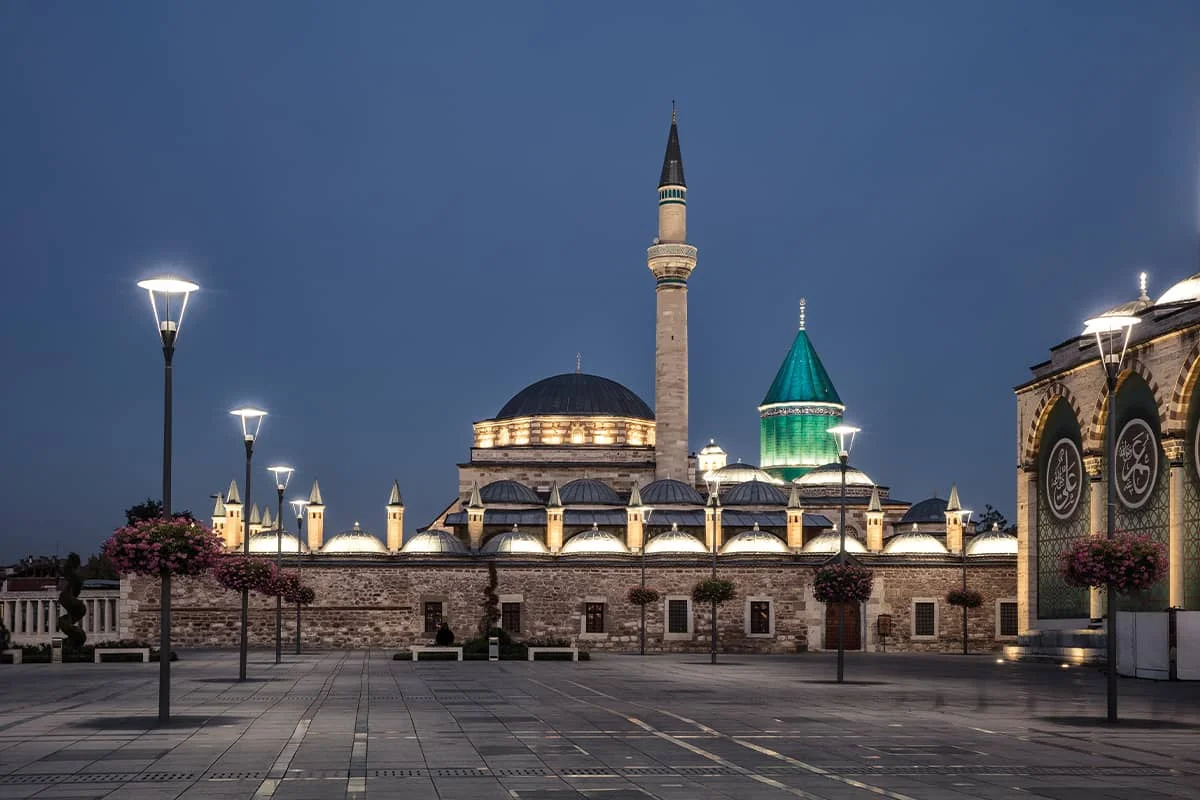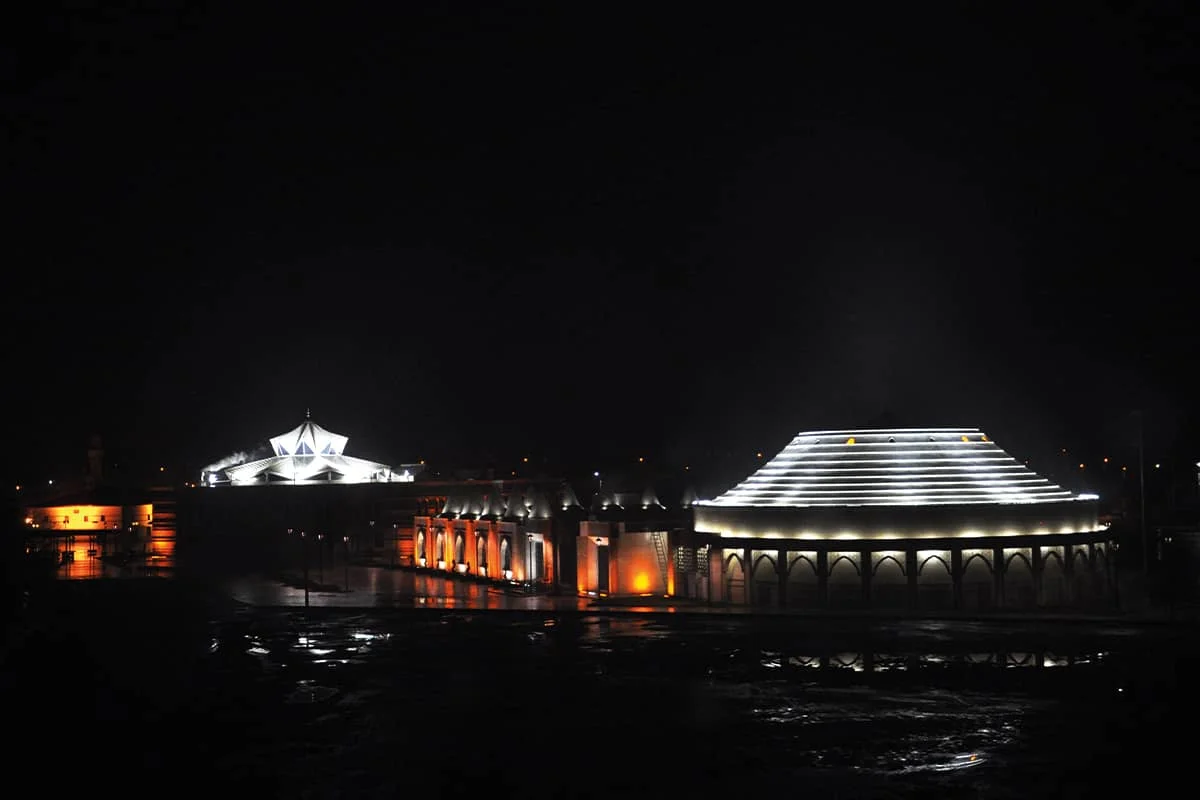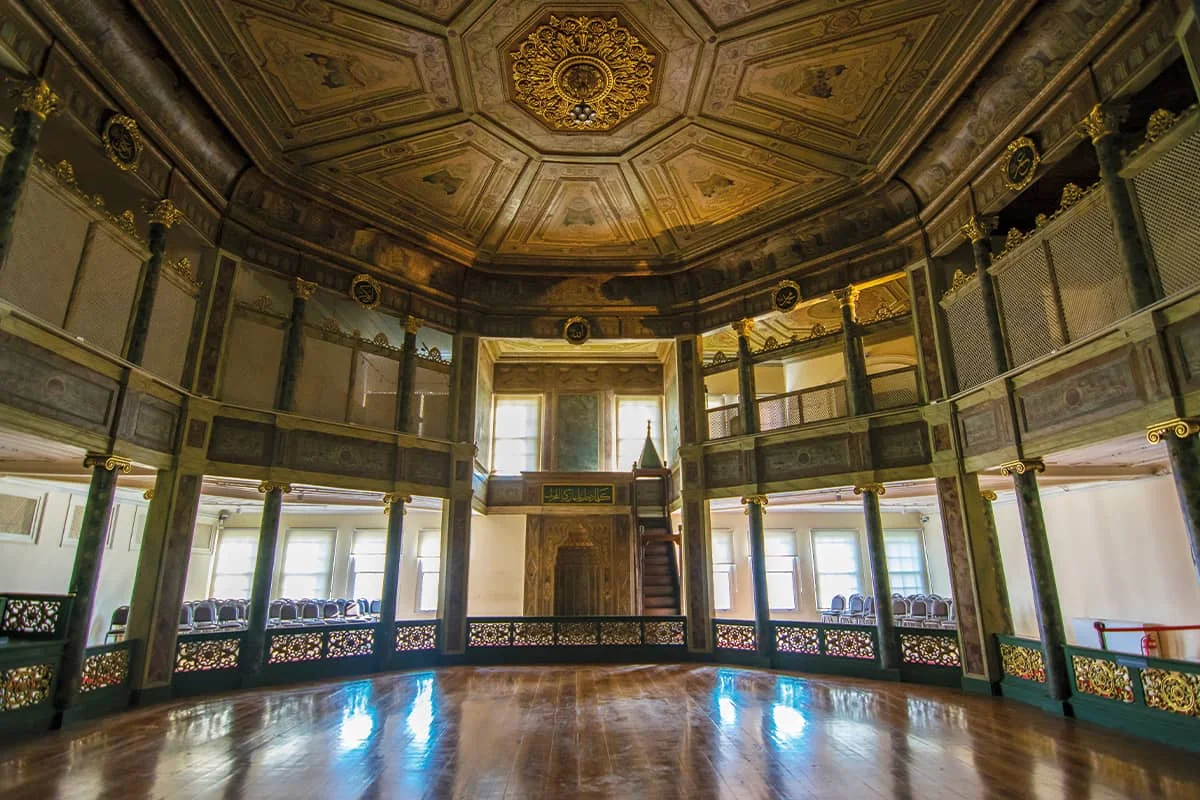Şeb-i Arûs: Türkiye Commemorates Rumi for the 750th Time
The last residence of Mevlânâ Celâleddîn Rûmî, the Turkish province of Konya is hosting the 750th of the Şeb-i Arûs ceremonies.
Held annually to commemorate Rûmî, a 13th-century Sufi scholar known all over the world, the ceremonies traditionally have an air of celebration as he considered death as the way to unite with “the Beloved” – God in Sufist terminology. In fact, the ceremonies bear the name Şeb-i Arûs which means the night of reunion for this sake.
Sema Ayin-i Şerifi
What is known as Semah ceremony in the west is also referred to as Sema Ayin-i Şerifi, and it sees whirling dervishes perform the traditional ritual to the accompaniment of Sufi music, usually featuring ney (reed) players. Traditionally begun with a praise of the Islamic prophet Mohammad, the ritual is laden with meaningful moves and details to inspire everypne. The red post on the Sheikh, for example, symbolises the sunset and thus the coming of the day Mevlânâ would be reunited with God.
Mevlânâ Celâleddîn Rumî
Rumî is a significant figure whose influence has persisted in all parts of the world, befitting a philosopher that embraces all religions, cultures, and people and whose writings have been considered a pinnacle of Islamic literature.
Mevlâna Museum

A foundational event for the city, Şeb-i Arûs is usually celebrated in Konya. The city’s famous landmark Mevlânâ Museum is where the 13th-century mystic and his companions are buried, and it stands on the lands Rumî once frequented. For visitors to the Şeb-i Arûs ceremony it composes a sight not to be missed.
With its famous Kubbe-i Hadra, which can be literally translated as the green dome, the shrine of Rumî composes a milestone that attracts hundreds of visitors not only during these 10 days which are full of contemplation but all year-round. Composed of two main buildings that were erected around a unique, stunning courtyard, the museum is a UNESCO-recognised foundation, safeguarding the teachings of Mevlânâ.
The Tomb of Shams Tabrizi
Sources tend to have different opinions on who Shams Tabrizi was. Some argue he was Rumî’s student whereas others do assert it was the other way round. What we know for certain is that they spent a certain time contemplating about religion and that Mevlânâ valued him so much that he dedicated an ecstatic poetry book to him.
Today, the Tomb of Shams Tabrizi situated 10 minutes from Mevlânâ Museum, and the visitors to the Şeb-i Arûs events change their route towards it alongside the museum. The events of 2021 started, for example, with a visit to this tomb, organised by the Provincial Directorate of Culture and Tourism of Konya.
Mevlânâ Cultural Centre

The Sema Ayin-i Şerifi and several other events are performed every evening between Dec. 7 and Dec. 17 2021 at this cultural centre. Located only a kilometre from Mevlânâ Museum, the centre hosts congresses, fairs, and exhibitions throughout the year, though it is spared for the annual commemoration events between these dates.
Dergâhs
There are several Turkish dergâhs (Mevlevi lodges) that do deserve your visit. Depending on your route, you could customise for yourselves a journey full of peace and contemplation by paying a visit to these places.
Galata Mevlevihanesi

One lodge that is more commonly known is Galata Mevlevihanesi (Mevlevi Lodge of Galata), located in İstanbul’s Galata quarter.
This year, the Şeb-i Arûs ceremonies here will be held on Dec. 16 at 5pm, with the contributions of the Turkish Ministry of Culture and Tourism and the Municipality of Beyoğlu.
UNESCO Influence
The Semah ceremony managed to carve itself a place in UNESCO’s Representative List of the Intangible Cultural Heritage in 2010, which has added to the tradition’s popularity.
